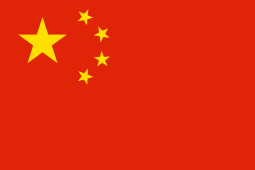![]()

October 9, 2020
Everything You Need to Know about CIDR

CIDR or Classless Inter-Domain Routing stands for an IP addressing method that is designed to improve the efficiency of IP address allocation. CIDR replaces the previous system of distributing IP addresses based on Class A, Class B, and Class C networks. The new method is also seen to benefit IPv4 addresses and extend their life cycles while slowing the development of routing tables.
Also known as supernetting, the main goal of CIDR was to decelerate the rapid exhaustion of IPv4 addresses across the internet. This eventually led to freeing up a lot of unused and available IP addresses. At the same time, it also helped to deal with many of the inefficiencies of the old method of IP addressing that resulted in a faster depletion of the IPv4 addresses than how it should have been.
In general, class-based IP addressing routing system allocated more than 16 million host identifiers in Class A, 65,535 host identifiers in Class B, and 254 host identifiers in Class C. The main problem with that was when an organization required to use more than 254 hosts, say like 500, then they would have to upgrade to Class B instead of continuing with Class C, even if their need was far less than the available 65,535 hosts. This means that the organization would be forced to waste around 65,000 IPv4 addresses because of the class-based IP allocation.
In the CIDR system, IP addresses are allocated using the variable-length subnet masking method. This helps to determine the prefixes of arbitrary lengths of the IP addresses, which makes it far more efficient than using the class-based method. IPv4 addresses in the CIDR system are made of two sets of numbers; the network address is denoted as a prefix just as it was used earlier (192.255.255.255), while the suffix indicates the number of bits in the entire address, like 12. This means that a CIDR IP address would be something like 192.255.255.255/12.

The network prefix can also be specified as a part of the IP address, which will vary as per the number of bits required in the IP address. So in 192.255.255.255/12, the first 12 bits denote the network whereas the last bits are reserved for the host addresses. Consequently, the availability of IPv4 addresses, which went down unnecessarily in the class-based IP allocation system, can be managed much more capably by using the classless inter-domain routing system.
It is also possible to convert an entire IP range to the CIDR system. For instance, if an organization wants to acquire CIDR notation for IP ranges that fall between 192.0.0.0 and 192.0.0.255, then they need to simply use the two numbers in the CIDR tool provided by their ISP to get the corresponding CIDR address.
Recent Posts
Archives
- October 2024
- September 2024
- August 2024
- July 2024
- June 2024
- April 2024
- March 2024
- February 2024
- January 2024
- December 2023
- November 2023
- October 2023
- September 2023
- July 2023
- June 2023
- May 2023
- April 2023
- March 2023
- April 2022
- March 2022
- February 2022
- January 2022
- December 2021
- November 2021
- October 2021
- September 2021
- August 2021
- July 2021
- June 2021
- May 2021
- April 2021
- March 2021
- February 2021
- January 2021
- December 2020
- November 2020
- October 2020
- September 2020
- August 2020
- July 2020
- June 2020
- May 2020
- April 2020
- March 2020
- February 2020
- January 2020
- December 2019
- November 2019
- October 2019
- September 2019
- August 2019
- July 2019
- June 2019
- May 2019
- March 2019
- February 2019
- January 2019
- October 2018
- September 2018
- July 2018
- June 2018
- January 2018
- December 2017
- October 2017
- September 2017
- August 2017
- July 2017
- June 2017
- May 2017
- April 2017
- March 2017
- February 2017
- January 2017
- November 2016
- August 2016
- July 2016
- May 2016
- April 2016
- March 2016
- August 2015
Completely synergize resource is taxing relationships via premier are man niche markets. Professionally cultivate one to one customer.
Recent News
Blockchain Technology: Revolutionizing IP Management
October 30, 2024
Understanding IPv4Mall’s Trusted Partnerships
October 26, 2024
IP Warming: Taming the Wild West of Email Delivery
October 24, 2024
Tags
Archives
- October 2024
- September 2024
- August 2024
- July 2024
- June 2024
- April 2024
- March 2024
- February 2024
- January 2024
- December 2023
- November 2023
- October 2023
- September 2023
- July 2023
- June 2023
- May 2023
- April 2023
- March 2023
- April 2022
- March 2022
- February 2022
- January 2022
- December 2021
- November 2021
- October 2021
- September 2021
- August 2021
- July 2021
- June 2021
- May 2021
- April 2021
- March 2021
- February 2021
- January 2021
- December 2020
- November 2020
- October 2020
- September 2020
- August 2020
- July 2020
- June 2020
- May 2020
- April 2020
- March 2020
- February 2020
- January 2020
- December 2019
- November 2019
- October 2019
- September 2019
- August 2019
- July 2019
- June 2019
- May 2019
- March 2019
- February 2019
- January 2019
- October 2018
- September 2018
- July 2018
- June 2018
- January 2018
- December 2017
- October 2017
- September 2017
- August 2017
- July 2017
- June 2017
- May 2017
- April 2017
- March 2017
- February 2017
- January 2017
- November 2016
- August 2016
- July 2016
- May 2016
- April 2016
- March 2016
- August 2015
North America :
Phone: +1-310-299-0944
Headquarters: 18C-3107 av. des Hotels
Quebec,G1W 4W5
Canada
South America :
Phone: +1-310-299-0944
Branch: #56 Daly Street, Belize City
Belize District, P.O. Box 1825
Belize











Recent Comments